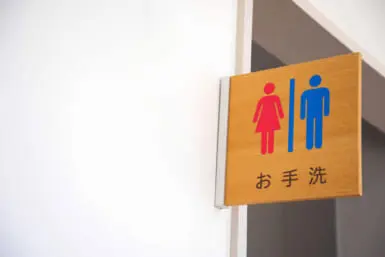Or, Jumping Through Hoops (And Paying Through the Nose)
By Roberto De Vido
This week I went to renew my International Driving License (IDL), which is in theory a sensible document providing near-universal recognition that the bearer has passed some sort of driving test, somewhere. In practice I have never met a policeman who knows what one is, but this is not necessarily a bad thing; in many places the IDL can serve as a sort of motorist’s “gaijin pass,” allowing him or her to walk away unpenalized from an encounter with The Man.
If you are a foreigner in Japan, however, you cannot drive on an IDL (plus your home country license) if you have a residential visa. [Once upon a time, you could, or at least, you could bluff your way through traffic stops that way.] No, you’ve got to get a Japanese one.
When I got my Japanese driving license, around 10 years ago, I had a relatively easy time of it compared to everyone I met at the Ministry of Transport’s Kanagawa licensing office during the course of my five visits there.
So where did I go wrong? First of all, I assumed the driving license road test was a measurement of driving ability, awareness, confidence and competence behind the wheel. No, no, no, no, no …
My final, successful effort cost me five and a half hours, plus an hour and a half of travel. The entire process was over 25 hours. And an average of ¥4,000 per visit. I met a guy there who had failed the driving test seven times and was still counting (having shared a testing car with him, I can confirm that the authorities were doing the right thing keeping him off the roads; the guy was a dreadful driver), and a guy who obtained his motorbike license after 14 months of effort.
For Japanese the system is set up so that you enroll at a driving school, which in exchange for a considerable amount of money will undertake to train you, and–here’s the important bit–get you through the test. People who learn at a driving school take the test there as part of the training course and never have to undergo the driving test at the testing center.
If you’re a foreigner, unless you are from one of a handful of countries with reciprocal agreements with Japan, you need to take a written AND driving test. I began this process on the 25th anniversary of obtaining my first license, and although I consider myself an alert and good driver, I failed the test twice before passing. I would venture to say that unless you take a “lesson” (offered by the testing center) beforehand, you have zero chance of passing on your first try.
So where did I go wrong? First of all, I assumed the driving license road test was a measurement of driving ability, awareness, confidence and competence behind the wheel. No, no, no, no, no … it’s a test of following the rules of the testing center, some of which are unknowable unless you’ve been tipped off by a friend beforehand, or paid for a lesson.
My first mistake was not tracking around a corner as tightly as possible to the curb. Although I was turning from a two-lane (one each way) road into a two-lane road, the roads are pretty wide and are considered four lane. I should have clawed my way along the curb as tightly as possible.
My second mistake was overshooting the stop line coming up to a T-junction. It was impossible to see around the corners from the stop line, so I did what nearly everyone does (except at stop lights) and stopped where I could see. End of test for the day. Do not pass Go, do not collect $200. In fairness, that’s certainly an offense, so … my bad.
And so, I booked another test. Two weeks later. Turned up quietly confident. Rolled out and at least this time completed the course without getting the joy buzzer (engine kill switch!) from the examiner. Passed without a problem, I thought.
Not a chance. Here were my two “mistakes”: one, I had driven too close to the “hazard” cones in one section of the course. “You should have been 50 centimeters away from those cones,” the examiner said. “How far was I?” I asked. “Thirty centimeters,” he said. That’s when it hit me that I would pass when he was ready to pass me and not before. I was only 30 centimeters away? Not a chance. They’d been visible out the window from my side (the far side) of the car.
“Do your best,” he said.
“I will,” I replied, “and I’ll be sure to use plenty of third gear.”
But it gets better. My main problem, he said, was that I “didn’t use third gear enough.” Quick check of the Japanese traffic regulations … nope, didn’t think there was law governing the use of certain portions of the gearbox. I just laughed (the course limits your speed nearly everywhere to 25kph, with turns and other activity nearly every 10 meters) and booked my next test.
Third test. Two weeks later.
New examiner. Is this good news or bad news? Tough to tell. It was the same guy the first two times and both days he passed only one person all session (there’s a morning session and an afternoon session) and the rumor is that the examiners have instructions to pass at least one person each session. [Another rumor is that they pass more people toward the end of the month, in order to meet quotas.]
The new guy was friendly enough and before we started he asked me how many times I had taken the test (although they know this already since it’s marked on your papers … and my belief is it governs whether or not and when you pass). Three, I said. “Do your best,” he said. “I will,” I replied, “and I’ll be sure to use plenty of third gear.”
I zoomed around the course (metaphorically, of course; I was driving like a granny) and when we pulled up he said (in English!), “Good. Good driving.” He said this again to me as we were walking upstairs, and again when he handed me the paper that would allow me to proceed with the licensing paperwork. Pretty shocking. I wondered, driving home, if I had turned in the all-time best performance in the history of the testing center …
So I passed. And weirdly, so did every other person being tested by that guy in that session (five of us). Even Lean, my Brazilian testing center buddy with whom I had gone through every stage (of failure), and whose driving on the final day the instructor described as “so-so”. He was sure he’d fail, but the gods were smiling.
A final note: the written test is much easier for foreigners than for Japanese, comprising only 10 “yes” or “no” questions. I can’t imagine anyone studies for it; it’s mostly common sense and you only need to get seven out of 10 to pass (I got eight).
However, in keeping with the trickiness of the entire process, the English version of the test that I took (you can choose, I think, among Japanese, Chinese, Korean, Spanish, English and Portuguese) was a very poor translation of the Japanese. On one question the diagram was clearly at odds with the text. I went with the diagram, assuming it was the same in the Japanese version, and got that one right.
A few days after I got my license, it was reported that the Portuguese version contained an error, and had done for three years. Over those three years, 168 unlucky Brazilians are known to have failed the written exam as a result of having gotten this question wrong (plus others that pushed them into the “fail” zone).
Do not pass “Go”, do not collect $200. Pesaroso … por favor tentativa outra vez.
Image: Bunny Bissoux










